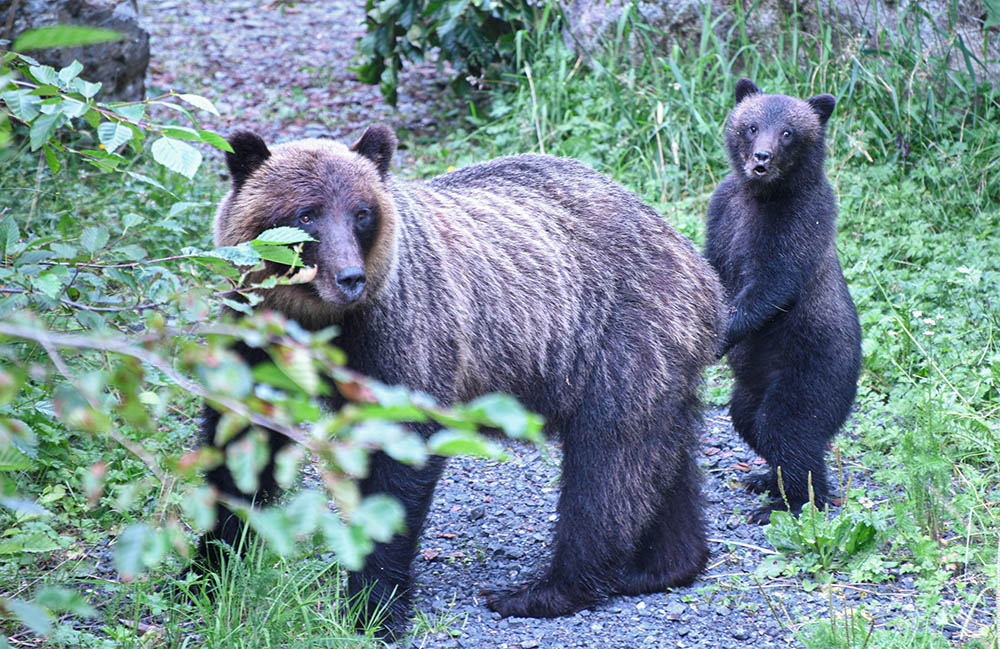
Bear Safety Tips: Hiking and Camping in Bear Territory
Prior to embarking on a hike, you always strategize your destination, schedule, and what to bring along, right? You should also consider how to hike (or camp) responsibly around wildlife. This is particularly true for bears. It may seem like bears are only found in Yellowstone, the Smoky Mountains, or Alaska. However, bears inhabit a significantly larger area. Were you aware that black bears are present in 40 out of the 50 states in the US?
The ranges of black bears and grizzly bears are expanding annually, so before venturing into the wilderness, be sure to verify if you’re in bear territory. If you are, continue reading for our safety recommendations on hiking in bear regions.
Never assume that hibernating bears are hidden away just because it’s chilly. Just last month (in November), we spotted a family of five bears in our backyard in the North Carolina mountains. Additionally, grizzly bears may emerge from hibernation as early as March in Yellowstone.
Always bring bear spray and familiarize yourself with its use before you commence your journey. Bear spray is prohibited on airplanes, so if you’re flying to your destination, you’ll need to purchase it locally. REI stocks them. Check out the video at the end of this post to learn how to operate bear spray. *Never discharge bear spray indoors*, practice using it outdoors.
UNDER NO CIRCUMSTANCES should you feed a bear, approach one, attempt to take a selfie with a bear, or try to pet it. If you’re in a national park and witness someone doing this, take a picture (try to capture the license plate number) and report it at the office. A fed bear is a doomed bear.
Hiking in Bear Territory
– If you spot a bear before it detects you: remain still, don’t advance, and savor the experience. If it’s moving toward you, ensure it is aware of your presence and declare yourself with a loud and serious “Hey Bear.” The bear will likely retreat. If you fail to announce yourself, you might surprise the bear at too close a distance, causing it to react instinctively. Once the bear has moved away, quietly retreat in the opposite direction.
– If you come across a bear that’s aware of you: refrain from running; this may trigger a chase response. Back away gradually in the opposite direction and wait for the bear to depart.
– Stay vigilant about your surroundings, make noise periodically, and avoid using earbuds.
– Refrain from hiking solo.
– Keep children in sight at all times.
– Make noise in dense vegetation.
– Be particularly cautious when gathering berries or nuts. Bears are searching for those too!
– Always KEEP YOUR PETS ON A LEASH or leave them at home. Dogs can provoke bears and cause them stress, which may lead to a bear attacking your dog.
– Do not litter. Take your rubbish away. Allowing bears to become accustomed to human food sources increases the likelihood of dangerous encounters with humans.
– Do not position yourself between a mother and her cub. If a mother bear perceives her cub to be in danger, she will defend it. If you observe a cub, always look for the mother and stay aware.
Camping in Bear Territory
– Establish backcountry camps away from dense vegetation and natural food sources.
– Maintain cleanliness at your campsite. Avoid leaving food exposed, and always secure it (in your vehicle, or in a bear-proof container) when you head out for a hike.
– Keep anything that has a food or toiletry scent out of your tent. No snacks, toothpaste, deodorant, sodas, lip balm, sunscreen, or bug spray.
– If camping with your pet and requiring a litter box in the tent, use unscented litter and keep it tidy. No pet treats either.
– For car camping, store food and toiletries inside a locked vehicle and ensure that all windows are closed. Bears have learned to open unlocked vehicles and break through open windows.
– While backpacking, keep food and toiletries suspended at least 10 feet above the ground and 10 feet away from any part of the tree. Some parks already have systems in place. Regulations may vary from national park to national park, so always check for rules at the park’s entrance.
Cooking in Bear Territory
– When preparing food, do not discard food scraps into your fire (or even outside the fire itself). No bean sauce, meat fat, or anything similar.
– Cook away from your tent to avoid attracting bears to your sleeping area. Many areas suggest a “bear-muda triangle” method, with your tent positioned at one corner (preferably upwind), your food storage at another corner, and your cooking area at the third, separated by a distance of 100 yards. One variation places your